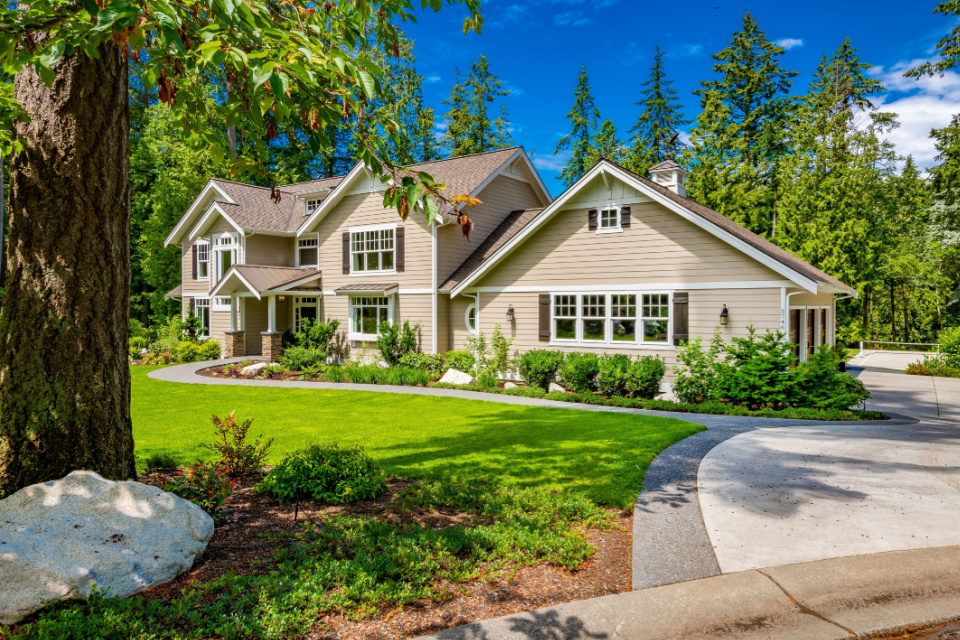
Common residential architectural styles in Australia
07/25/2023
Sloping Block Construction Guide in Australia
07/25/2023There are several interior design styles that are very popular in Australia, and these styles usually coincide with a modern, natural and relaxed lifestyle. Here are some of the most popular interior design styles in Australia:
Modern Australian Style: Modern Australian interior design styles emphasize simplicity, openness and a natural feel. This style is often based on bright neutral tones, including white, beige and gray, combined with natural materials such as wood and stone. Interior spaces are often fluid, emphasizing the seamless flow between indoors and outdoors, using large windows and sliding doors for plenty of natural light and ventilation. Furniture and decorations are usually simple and functional, pursuing comfort and practicality. As the name suggests, this interior style is all about simplicity. There is tranquility in simplicity. Typically, minimalist spaces feature a monochrome palette of whites, grays, and blacks, but occasionally you’ll see accent colors.
Beach Style: Due to Australia’s rich coastline, beach style is very popular in interior design. This style emphasizes ease, relaxation and a connection to the natural surroundings. Bright marine tones like blues and greens are often used in interiors, paired with whites and neutrals. Furnishings are generally light, comfortable, and made of natural materials such as wood and rattan. Sea elements such as shells, sea animal prints and marine artwork are often used in the decor.
Traditional Australian Style: Traditional Australian style combines elements of the British colonial period and Australian history. This style often uses warm colors, such as deep reds and browns, and incorporates traditional crafts and decorations. Furniture and fabrics may feature period patterns and patterns for a traditional touch. Antique furniture and traditional fireplaces are also often featured in this style of interior design.
Boho style: Boho is one of the most popular interior design styles in recent years. The interior uses neutral tones, giving life to texture: rattan, jute, woven baskets, lace and ceramics. The indoor furniture is usually hanging chairs, old furniture. , rugs, wall weaves and statement chandeliers. Boho-inspired modern looks are less hippie and regal, and luxe items can fit in nicely.
Mid-century modern style: Mid-century modern style is a popular interior design style in Australia, known for its clean lines, minimalist aesthetic, and integration of indoor and outdoor spaces. This design style emerged in the mid-20th century and remains influential today. Furniture and architectural elements are often characterized by smooth curves, geometric patterns, and sleek profiles. In Australian interiors, you’ll often find timber, teak, and walnut as popular choices for furniture and flooring. These warm and earthy tones create a cozy and inviting atmosphere. Natural light plays a crucial role in mid-century modern design. Floor-to-ceiling windows, sliding glass doors, and clerestory windows are common features that allow ample natural light to flood the interiors. This not only brightens up the space but also blurs the boundary between indoors and outdoors. While mid-century modern design tends to favor a neutral color palette, pops of bold and vibrant colors are also common. Shades like mustard yellow, teal, and burnt orange are frequently used to add character and visual interest. Geometric patterns, abstract prints, and atomic motifs are also seen in textiles and wallpapers.
Sustainable style is a growing trend in interior design in Australia, reflecting a focus on environmentally friendly, energy-efficient, and sustainable practices. This style aims to reduce the environmental impact of interior spaces while creating beautiful, functional, and healthy living environments. Sustainable interior design emphasizes the use of eco-friendly materials. This includes choosing renewable resources, such as bamboo and cork flooring, reclaimed or recycled materials, and low- or zero VOC (Volatile Organic Compounds) paints and finishes. Materials that are locally sourced or certified sustainable, like FSC certified wood, are also favored. Sustainable interiors prioritize energy efficiency to reduce energy consumption. This can be achieved through the use of energy-efficient lighting, such as LED bulbs, and the integration of smart home technology for energy monitoring and control. Energy-efficient appliances and systems, including HVAC (heating, ventilation, and air conditioning), insulation, and solar panels, are commonly incorporated. Sustainable design prioritizes indoor air quality by minimizing the use of toxic materials and promoting proper ventilation. This includes selecting low VOC paints, formaldehyde-free furniture, and natural or organic textiles. Improved air filtration systems and indoor plants are often incorporated to purify the air and enhance the overall indoor environment. Sustainable design encourages the use of recycled and upcycled materials. This can involve repurposing furniture and accessories, salvaging architectural elements, or incorporating reclaimed wood or metal into the design. This approach reduces waste and promotes resourcefulness.
These styles are not set in stone, and Australian interior designers and residents often adapt and blend them according to personal preferences and needs to create a unique and personalized interior design style.




